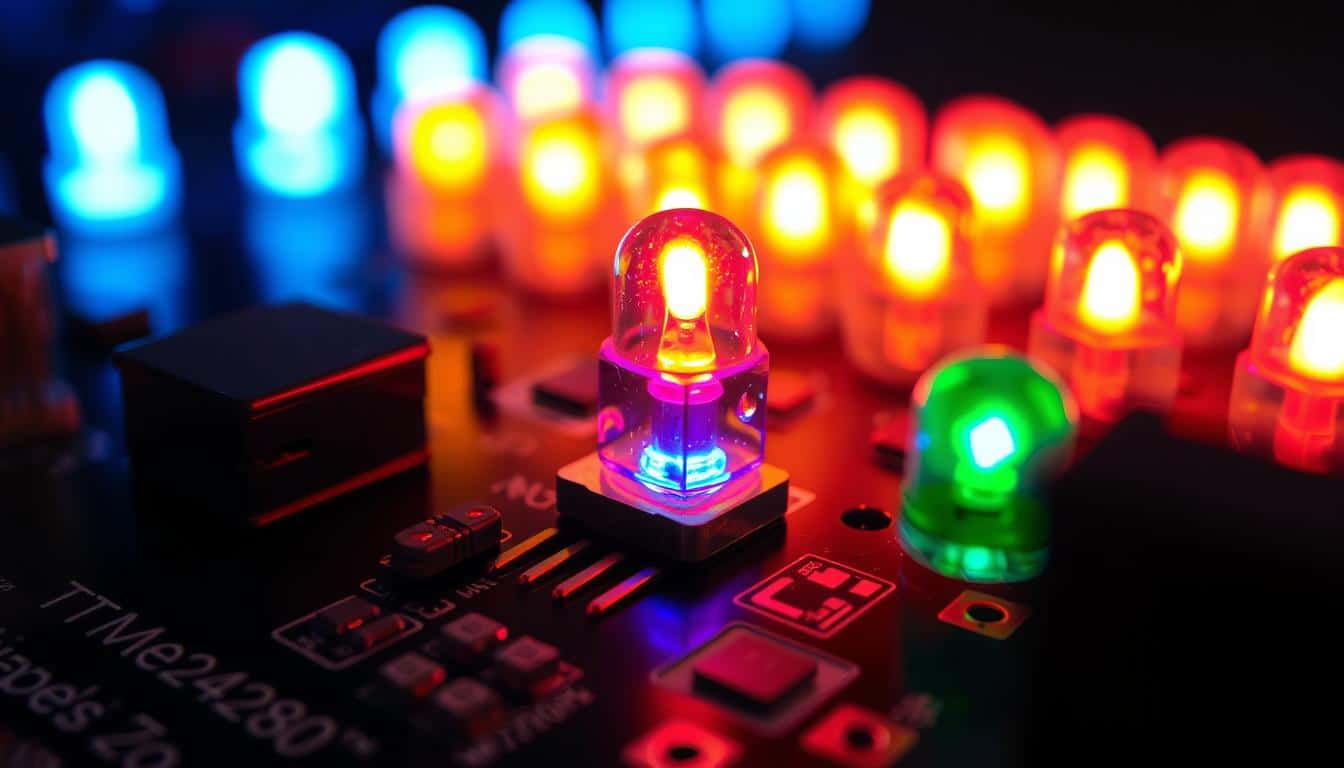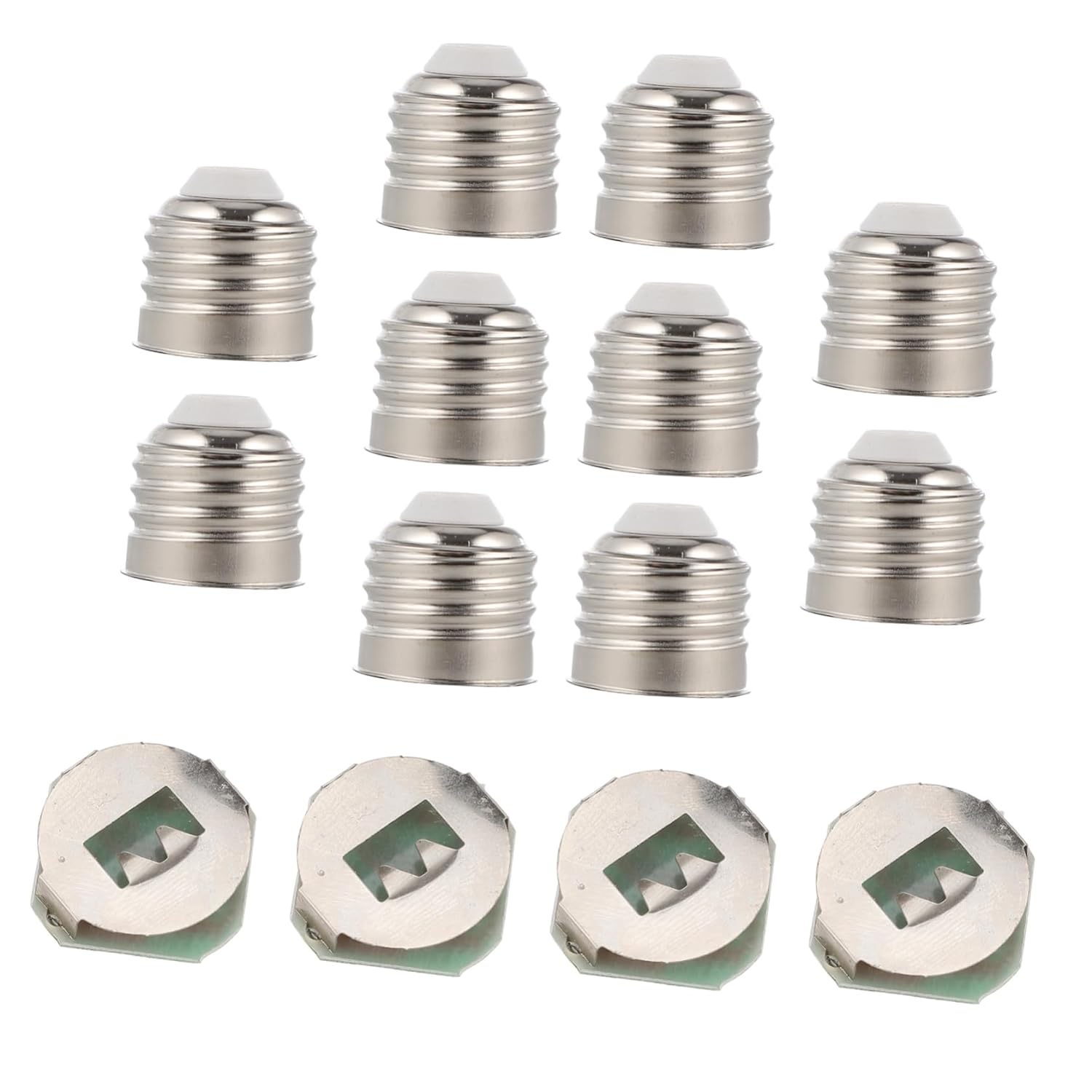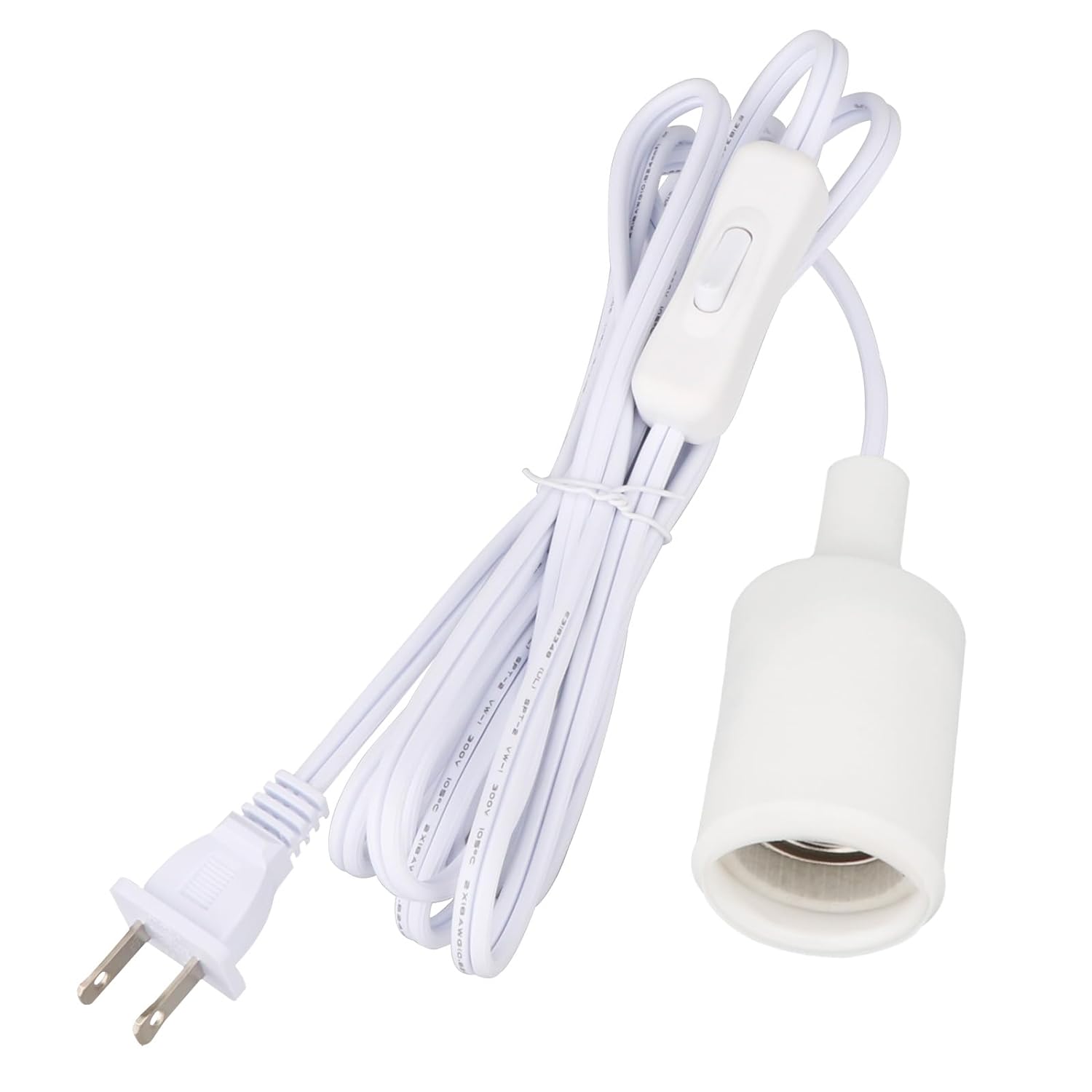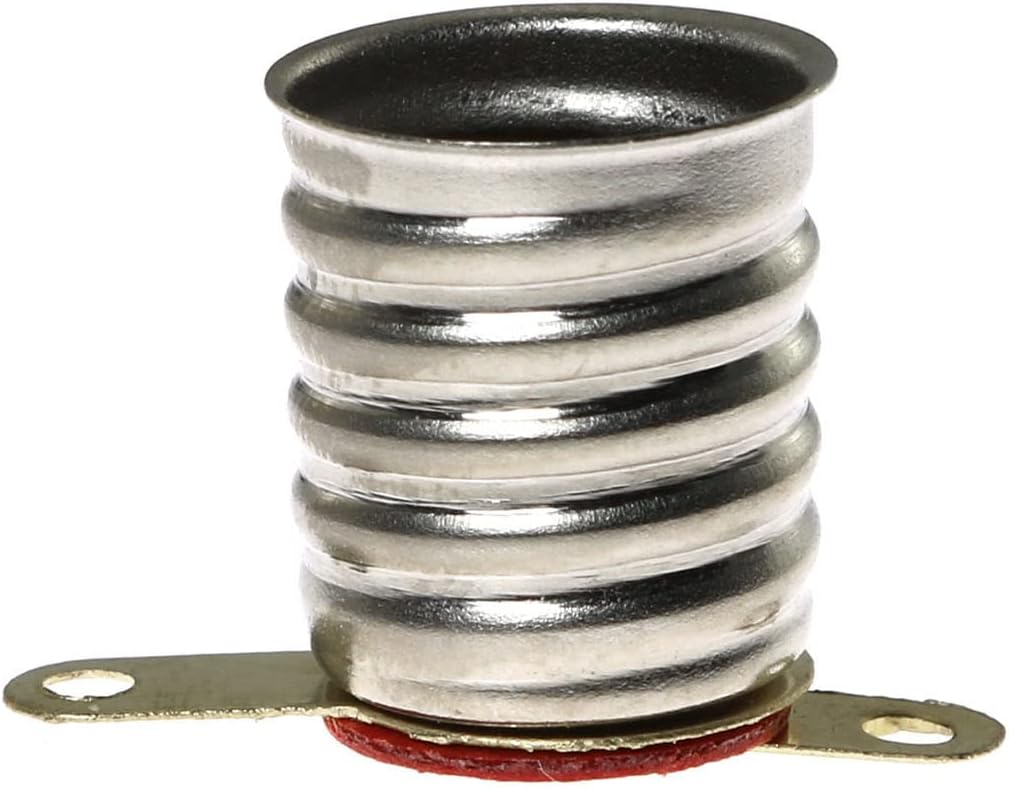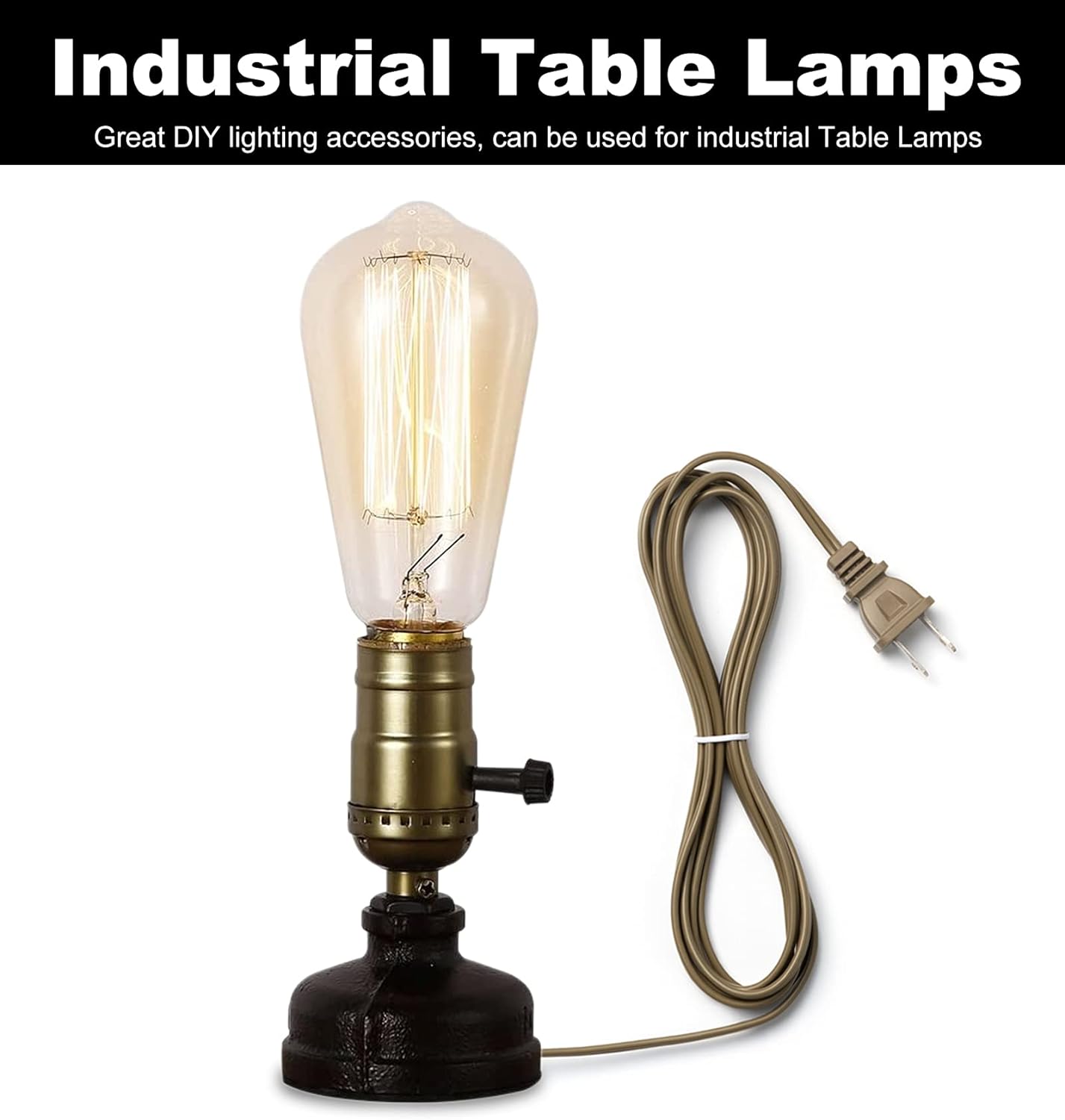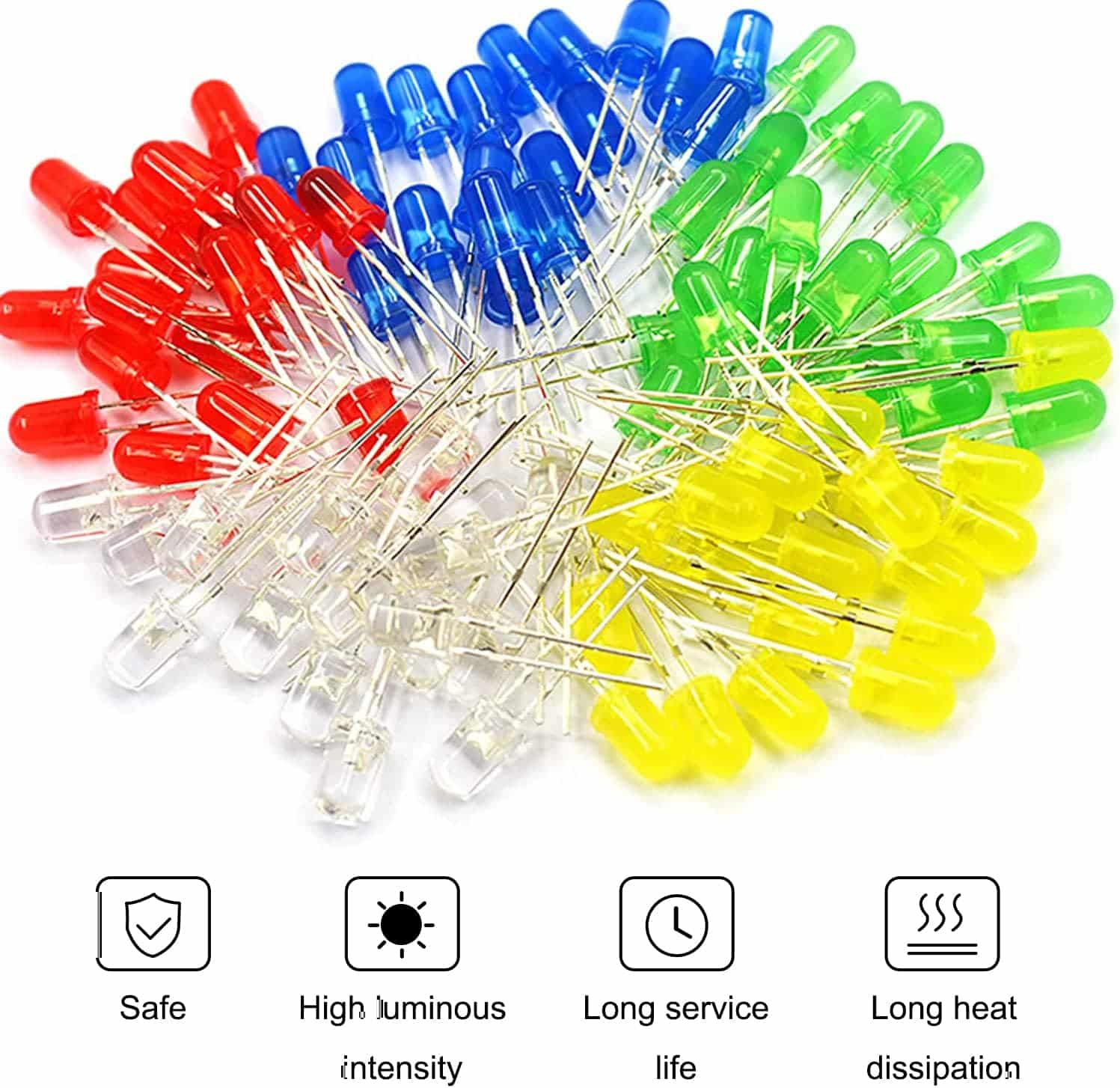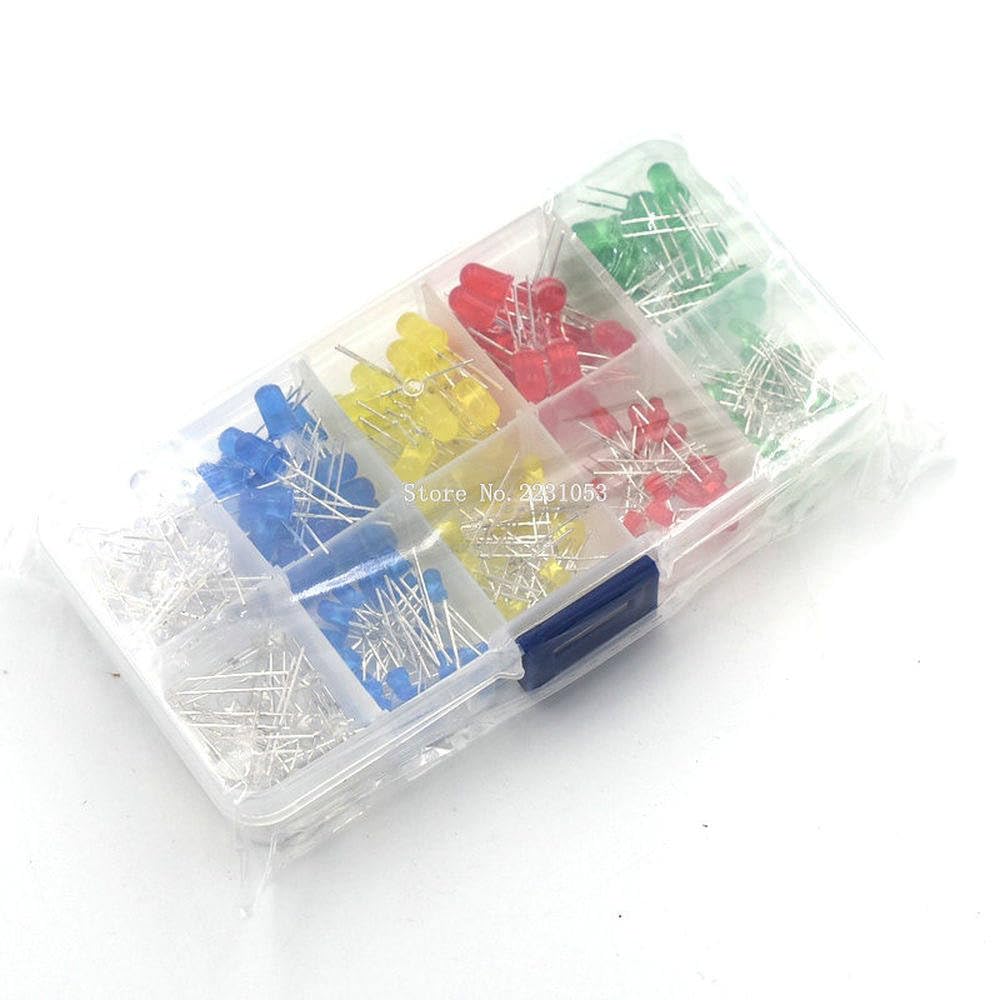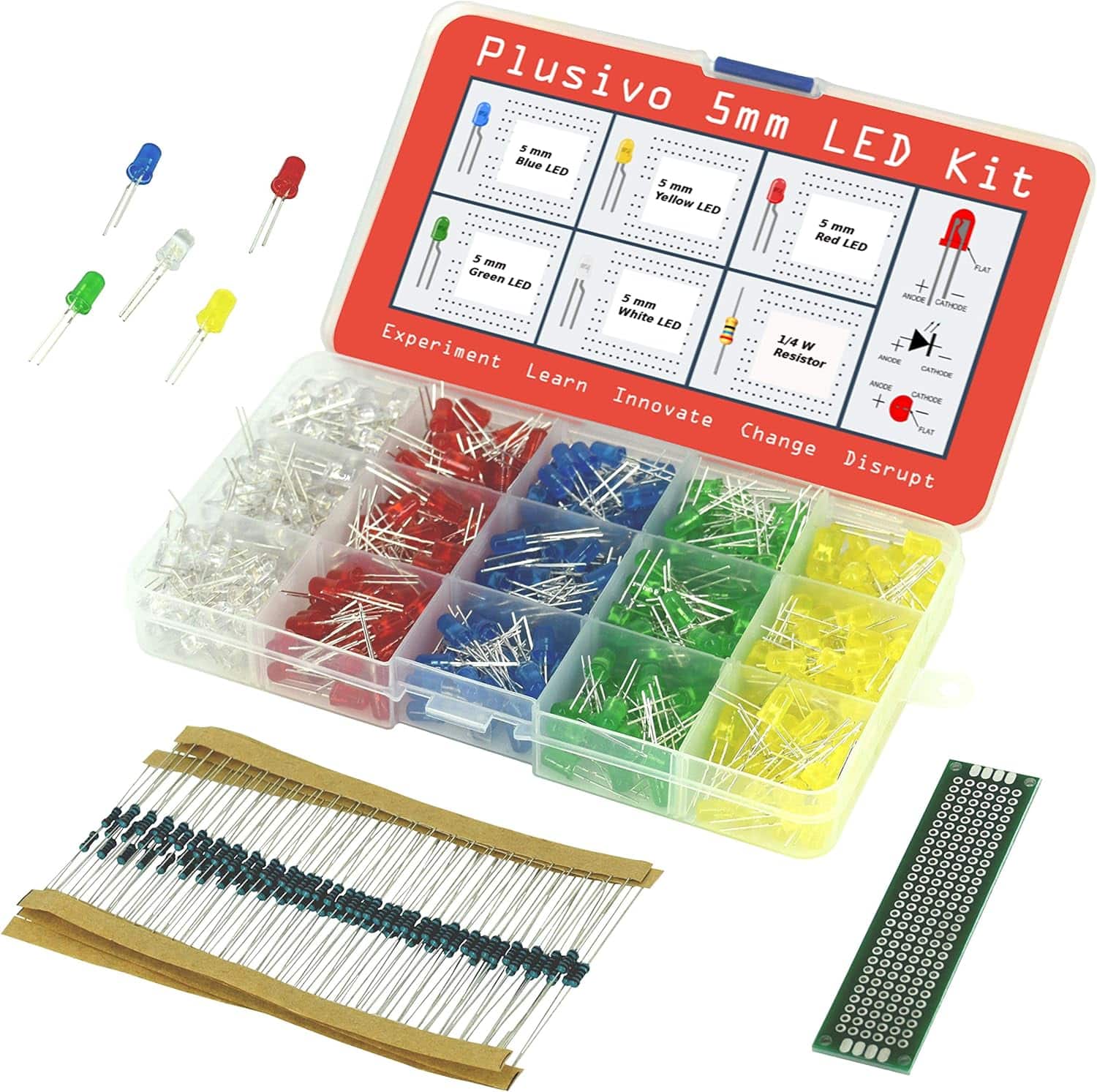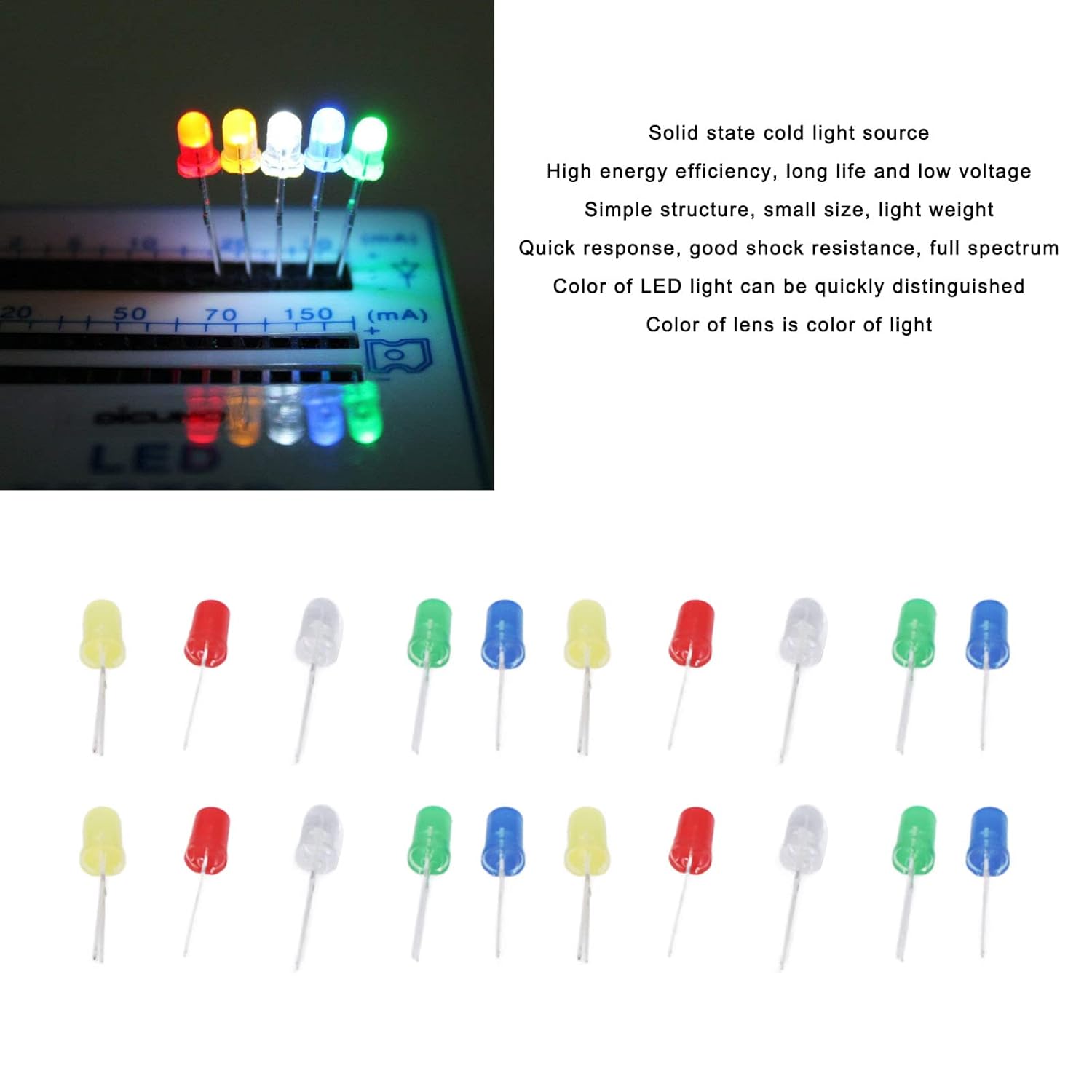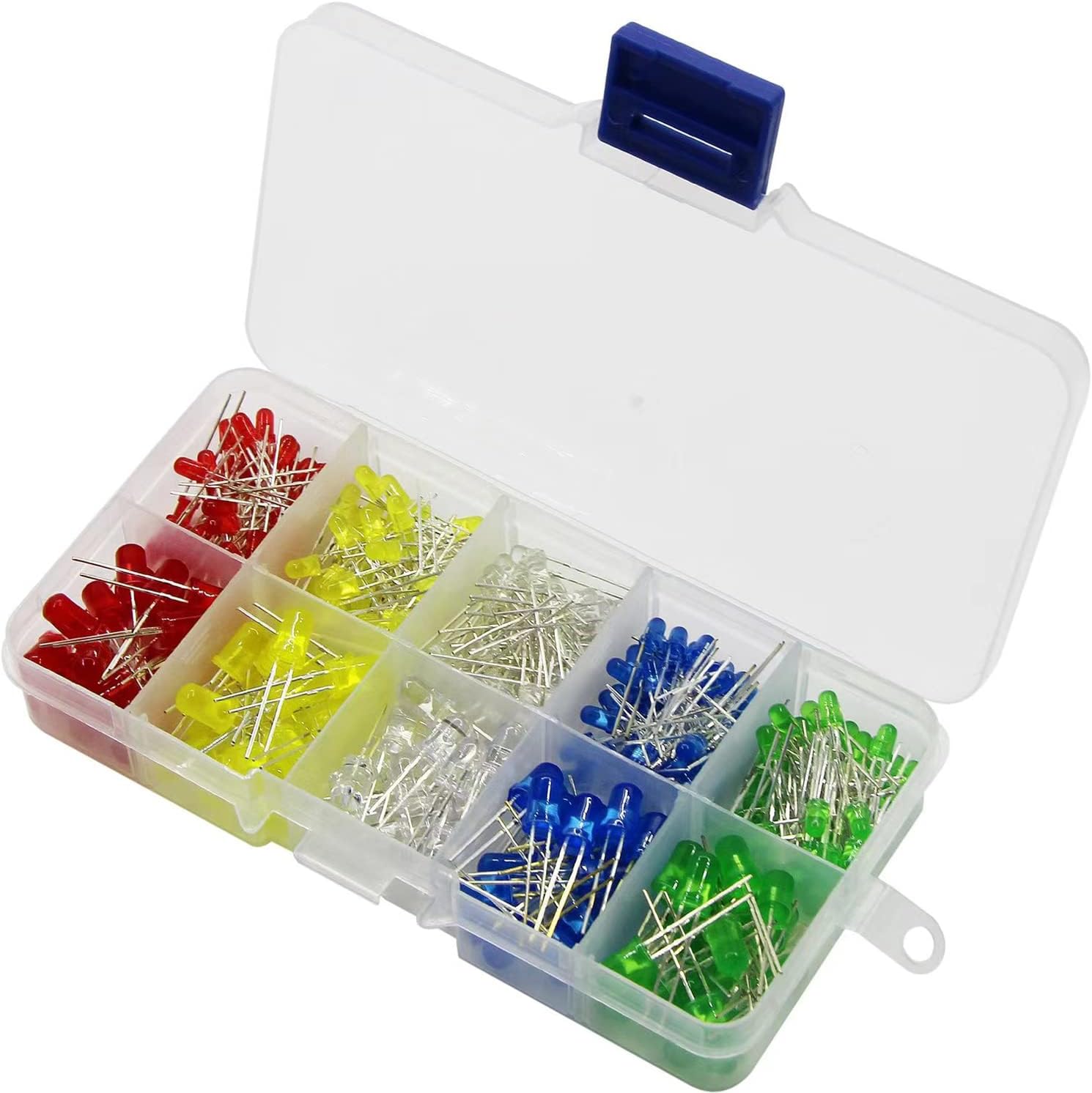Have you ever considered why LED technology transformed the lighting industry so rapidly? As we transition to more energy-efficient lighting, understanding LEDs is crucial.
Essential Insights
- A light-emitting diode (LED) is a semiconductor component that generates light when an electric current is applied.
- LED technology boasts high efficiency, converting electrical energy into light with minimal heat generation.
- White LEDs were made feasible with the advancement of high-brightness blue LEDs based on Gallium Nitride in 1993.
- Due to their directional light emission, LEDs have emerged as the favored option for energy-efficient lighting across diverse applications.
- Grasping the fundamentals of LEDs aids in making knowledgeable choices regarding contemporary lighting solutions.
An Introduction to LED Technology
LEDs, or Light Emitting Diodes, are revolutionizing the lighting sector. They differ significantly from traditional bulbs and CFLs. LEDs operate using a specialized chip to produce light, rather than a filament or gas. This design leads to their efficiency and positions them as integral to solid-state lighting.
The efficiency of LEDs comes from their design and the chip they utilize. When electricity passes through this chip, it generates light. This illumination is vibrant and remains cool. A heat sink controls the temperature, ensuring the light intensity stays consistent.
LEDs are compact and adaptable across various environments. They can illuminate residential spaces or enhance commercial establishments. This underscores the advantages of solid-state lighting in addressing modern requirements.
Here’s a comparison of LEDs with traditional bulbs and CFLs:
| Characteristic | LEDs | Incandescent Bulbs | CFLs |
|---|---|---|---|
| Energy Efficiency | High | Low | Moderate |
| Lifespan (hours) | 25,000-50,000 | 1,000 | 8,000-10,000 |
| Heat Emission | Low | High | Moderate |
| Environmental Impact | Low (no mercury) | High | Moderate (contains mercury) |
What Is a Light Emitting Diode?
![]()
A Light Emitting Diode, or LED, is a unique light-emitting semiconductor. It functions by allowing an electric current to flow through it, producing light.
LEDs are composed of materials such as aluminum-gallium-arsenide (AlGaAs). The fabrication process involves introducing impurities to the semiconductor, resulting in a P-type and N-type region.
When voltage is applied, electrons and holes converge and recombine, releasing energy as visible light. The hue of the emitted light is determined by the materials utilized.
| Material | Resulting Light |
|---|---|
| Aluminum Gallium Arsenide (AlGaAs) | Red |
| Gallium Phosphide (GaP) | Green |
| Indium Gallium Nitride (InGaN) | Blue |
LEDs are capable of generating all colors in the spectrum, making them invaluable in various fields, such as display technology and lighting.
How LEDs Produce Light
LEDs function by utilizing specialized components called P-N junctions and materials known as semiconductors. These elements enable the light production in LEDs.
The Fundamental Structure
An LED consists of two primary elements: N-type and P-type semiconductors. The N-type contains surplus electrons, while the P-type has holes. When voltage is applied, electrons and holes migrate towards one another.
The P-N Junction
The P-N junction represents the interface where the N-type and P-type materials converge. Upon applying a forward voltage, the junction permits current flow, whereas a reverse voltage inhibits current flow. This characteristic is essential for the functionality of LED lights.
Recombination Process
LEDs generate light through a unique process. When electrons encounter holes at the P-N junction, they release energy in the form of photons. This mechanism contributes to the remarkable efficiency of LEDs, minimizing energy loss as heat.
The Benefits of LED Lighting

LED lighting offers numerous advantages that distinguish it from traditional bulbs. It conserves energy, is environmentally friendly, and has an extended lifespan. These features make LEDs ideal for both residential and commercial use.
Energy Efficiency
LEDs excel in transforming electricity into light, achieving efficiencies of up to 90%. Traditional bulbs are inefficient, losing much energy as heat. LEDs consume less power, presenting savings that benefit both your budget and the environment.
Longevity
LEDs have remarkably long lifespans, significantly outlasting traditional bulbs. Unlike incandescent bulbs that burn out quickly, LEDs require less frequent replacements, enhancing their durability.
Environmental Advantages
LEDs are environmentally advantageous. They consume less energy, resulting in lower carbon emissions. Moreover, they lack hazardous materials present in some bulbs, making the decision to choose LEDs beneficial for the environment and a wise choice overall.
| Criteria | Energy-efficient LED Lighting | Incandescent Bulbs | CFL Bulbs |
|---|---|---|---|
| Energy Efficiency | Up to 90% | Less than 10% | Approximately 25% |
| Average Lifespan | 25,000+ hours | 1,000 hours | 8,000 hours |
| Environmental Impact | Low (no hazardous materials) | High (inefficient energy use) | Moderate (contains mercury) |
Kinds of LEDs
Selecting the appropriate LED is vital for the success of your project. There are two primary categories: lamp type LEDs and surface mount LEDs. Each type offers unique advantages tailored to different applications.
Lamp type LEDs feature protruding leads, making them suitable for mounting on circuit boards via holes. These are commonly found in indicators and displays.
Surface mount LEDs (SMD LEDs) are designed for surface installation. Their compact and efficient nature makes them ideal for contemporary devices. They are employed in smartphones and televisions due to their aesthetic appeal and effective heat management.
- Side-emitting LEDs: These illuminate from the side, making them suitable for specific directional applications.
- Rear mount LEDs: Suitable for confined spaces, such as in vehicles, to project light forward.
- Standard SMD LEDs: Common surface mount LEDs, available in a variety of sizes and power outputs.
Gaining insight into these types of LEDs empowers you to make informed choices. Whether it’s a compact gadget or a large display, understanding lamp type LEDs and surface mount LEDs leads to superior lighting solutions.
Wavelength and Color
The hue of an LED is determined by its LED emission wavelength. This wavelength is contingent upon the semiconductor material utilized. Familiarity with light wavelengths is essential as it indicates the visible color we perceive.
Understanding Light Wavelengths
LEDs possess specific wavelengths, including Peak Wavelength (λP) and Dominant Wavelength (λD). The λD represents the color most prominently seen. This control is crucial for accurate color representation.
Color Customization for Various Uses
LEDs can be manufactured in a wide range of colors. This versatility is beneficial for traffic light colors and automotive lamps. By employing specialized materials, they comply with standards, thereby ensuring safety and visibility.
Methods for Generating White Light
To produce white light LEDs, a blue LED is frequently combined with a yellow phosphor. This combination yields effective white light. Another approach includes blending red, green,and azure LEDs. This is more prevalent in full-spectrum LED displays.
Thermal Management in LEDs
To ensure LEDs function efficiently and endure over time, temperature regulation is essential. As LEDs increase in temperature, their brightness diminishes, and their lifespan shortens. Therefore, maintaining a cool environment is crucial for their efficacy and longevity.
The Function of Heat Sinks
Heat sinks play a vital role in the cooling of LEDs. They absorb and dissipate the heat generated by LEDs. This prevents LEDs from overheating. Heat sinks are available in various configurations, enhancing the longevity of LEDs and enabling them to emit light brightly for extended periods.
- Passive Heat Sinks: These utilize natural convection to dissipate heat.
- Active Heat Sinks: These utilize fans or blowers for enhanced cooling.
Significance of Thermal Management
Maintaining cool temperatures for LEDs is critically important. It enhances their functionality and extends their lifespan. Elevated temperatures can rapidly damage LEDs.
Numerous designs for heat sinks exist to effectively manage temperature. This versatility allows LEDs to be used in various settings, such as residential and commercial spaces. Effective thermal management makes LEDs a dependable choice for illumination in numerous environments.
| Type of Heat Sink | Description | Application |
|---|---|---|
| Aluminum Heat Sinks | Provides excellent thermal conductivity and lightweight characteristics. | Residential LED bulbs and fixtures |
| Copper Heat Sinks | Superior thermal conductivity, but heavier and more costly. | High-output LED applications |
| Hybrid Heat Sinks | Merges aluminum and copper for optimal performance. | Specialized industrial LED lighting |
Uses of LED Lighting
LED lighting has impacted numerous sectors due to its efficiency and adaptability. It serves well in residential areas, commercial enterprises, and specialized environments. LEDs are exceptionally versatile.
Home Use
LED lights are ideal for residential settings as they conserve energy, have a long lifespan, and require minimal maintenance. They come in various sizes and designs, ranging from standard bulbs to innovative styles. This variety allows homeowners to seamlessly incorporate LED lighting into their decor.
Commercial and Industrial Uses
In corporate offices, retail establishments, and large facilities, LED lighting provides powerful and efficient illumination. Commercial LED lighting is tailored for these environments, offering significant energy savings. Industrial LEDs are designed for demanding settings such as warehouses and factories, enhancing safety and productivity.
Specialized Applications: Traffic Signals, Automotive Lights
LEDs are also used in specific applications like traffic lights and automotive lighting. LED traffic signals are bright and visible, improving road safety. LED automotive lighting is robust, low-maintenance, and available in various colors, enhancing both vehicle aesthetics and safety.
Benefits of Choosing ENERGY STAR Certified LED Products
Opting for ENERGY STAR LED bulbs guarantees high-quality products. They adhere to strict performance standards. These bulbs are designed to conserve energy and offer extended lifetimes.
- Energy Efficiency: ENERGY STAR LED bulbs consume less electricity while providing superior brightness. They’re excellent for energy savings.
- Longevity: These bulbs outlast traditional lighting options. Replacements are less frequent, resulting in cost savings.
- Environmental Advantages: Employing these bulbs aids in reducing pollution and waste.
All ENERGY STAR certified LED products undergo rigorous testing. They are evaluated for quality and efficiency.
- Quality Assurance: Products are assessed for color accuracy, luminosity, and uniform light distribution.
- Performance Testing: Every bulb is verified to ensure efficiency and longevity.
- Warranty: These bulbs come with a minimum three-year warranty, providing peace of mind.
Provided below is a comparison table detailing how ENERGY STAR LED bulbs stand against conventional LED bulbs, illustrating the advantages of certified products:
| Criteria | ENERGY STAR LED Bulbs | Standard LED Bulbs |
|---|---|---|
| Energy Efficiency | Highly Efficient | Variable |
| Lifespan | Lasts 10-25 years | Lasts 5-10 years |
| Warranty | Minimum 3 years | 1-2 years |
| Environmental Impact | Low | Moderate |
The Future of LED Technology
LED technology is rapidly evolving, promising enhanced performance and innovative discoveries. This section will explore the latest advancements in LED technology and its future potential.
Advancements in LED Technology
Recent innovations in LED technology emphasize increased brightness, improved color quality, and enhanced energy efficiency. New materials and designs are being utilized to create LEDs that are more adaptable and efficient. Organic LEDs (OLEDs) represent a significant progression, offering flexibility and a range of applications. Additionally, smart technology is being integrated into LEDs, making lighting more interactive and customizable.
Future Prospects
The trajectory of LED technology will revolutionize how we illuminate our homes and workspaces. Ongoing research aims to deliver even more dynamic and controllable lighting solutions. Notable potential developments include:
- Advanced OLEDs: Employing organic LEDs in increasingly flexible and versatile manners.
- Smart Integration: Incorporating more smart technology for enhanced control and automation.
- Enhanced Energy Efficiency: Achieving further energy savings, contributing to environmental benefits.
- Improved Color Customization: Offering superior colors and lighting tailored to individual preferences.
Through continuous advancements in LED technology, the industry is poised to deliver more efficient, flexible, and interactive lighting for a multitude of applications.
Conclusion
Examining LED technology reveals how Light Emitting Diodes are transforming the illumination landscape. They utilize less energy while lasting longer, providing numerous advantages. LEDs have become the premier option for a variety of lighting applications.
The transition to LED lighting represents more than a passing trend. It signifies a strategic shift towards sustainability. This evolution is making our illumination smarter and more environmentally friendly.
The future of LED lighting is promising, owing to ongoing advancements. These innovations enhance lighting quality and introduce eco-conscious solutions. Keeping pace with these changes is essential to fully reap their benefits.
Choosing LED technology contributes to energy conservation and environmental protection. As pioneering concepts emerge, LED lighting will continue to improve, revolutionizing how we illuminate our spaces to be more efficient and intelligent.
By selecting LEDs, you’re not just acquiring superior lighting. You’re also promoting environmental stewardship. This decision supports a greener, more sustainable world for everyone.
FAQ
What is a light emitting diode (LED)?
How does LED technology differ from traditional lighting?
What are the basic components of an LED?
What is the significance of the P-N junction in an LED?
How do LEDs provide energy efficiency?
Why do LEDs possess a longer lifespan compared to conventional bulbs?
What ecological advantages does LED lighting provide?
What varieties of LEDs are available?
How is LED color determined?
How is white light generated using LEDs?
What function do heat sinks serve in LED lighting?
In what ways are LEDs applied in residential spaces?
How are LEDs employed in commercial and industrial settings?
Why are LEDs favored for traffic lights and automotive lamps?
What advantages are there in choosing ENERGY STAR certified LED products?
What future advancements are anticipated in LED technology?
Source Links
- Learn About LED Lighting – https://www.energystar.gov/products/light_bulbs/learn-about-led-lighting
- Light Emitting Diode <What are LEDs and How Do They Work?> | Electronics Basics – https://www.rohm.com/electronics-basics/leds/what-are-leds
- How Light Emitting Diodes (LEDs) Work – https://electronics.howstuffworks.com/led.htm

